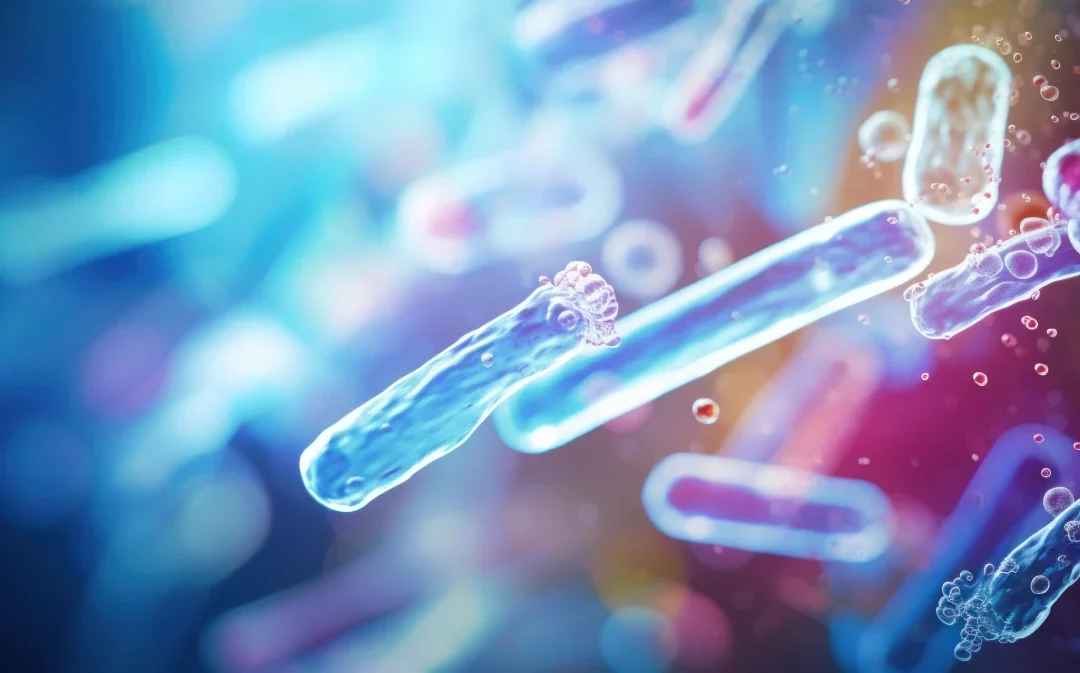So, what can we do to help our bodies bounce back and build long-term resilience? Let’s take a closer look at how viral infections can impact immunity and the best strategies for recovery.
How Viral Infections Can Weaken the Immune System
After fighting off a virus, the immune system can experience temporary dysfunction, leading to:
- Immune exhaustion – T-cells and natural killer (NK) cells can become overworked and less effective (Wherry & Kurachi, 2015).
- Inflammatory imbalances – The immune system may continue producing excessive cytokines, leading to chronic inflammation (Peluso et al., 2021).
- Gut microbiome disruptions – Since a huge portion of immune function is linked to the gut, post-viral changes in gut bacteria can impact overall immunity (Zuo et al., 2020).
- Mitochondrial dysfunction – Impaired energy metabolism can contribute to post-viral fatigue and sluggish immune responses (Dardalhon et al., 2019).
These effects don’t just disappear overnight, but there are ways to help the body recover more efficiently.
How to Support Immune Recovery and Build Resilience
1. Focus on Nutrient-Dense Foods
The immune system relies on key nutrients to repair itself and regain strength. Some of the most important include:
- Vitamin D – Helps activate T-cells and reduces inflammation. Studies suggest that maintaining healthy vitamin D levels can lower infection risk and severity (Aranow, 2011).
- Zinc – Supports immune cell function and aids in tissue repair (Read et al., 2019).
- Vitamin C – Acts as a powerful antioxidant, reducing oxidative stress and improving immune efficiency (Carr & Maggini, 2017).
- Polyphenols and flavonoids – Found in foods like berries, green tea, and dark chocolate, these compounds help reduce inflammation and support immunity (Di Meo et al., 2020).
2. Restore Gut Health
A well-balanced gut microbiome is crucial for a strong immune system, especially after a viral infection. Here’s how to support it:
- Probiotics and prebiotics – Strains like Lactobacillus and Bifidobacterium can help restore microbial balance and improve immune resilience (Kang et al., 2018).
- Fermented foods – Kefir, sauerkraut, and kimchi provide beneficial bacteria that promote gut health (Marco et al., 2017).
3. Prioritize Lifestyle Habits That Support Immunity
- Exercise regularly – Moderate physical activity enhances immune surveillance and helps reduce chronic inflammation (Nieman & Wentz, 2019).
- Get enough sleep – Poor sleep weakens immunity, making it harder to recover from illness (Besedovsky et al., 2019).
- Manage stress – Chronic stress suppresses the immune system. Mindfulness, meditation, and deep breathing can help restore balance (Black & Slavich, 2016).
4. Consider Herbal and Natural Immune Modulators
Some natural compounds have been shown to support immune function and reduce inflammation:
- Elderberry (Sambucus nigra) – Has antiviral properties and can enhance immune function (Hawkins et al., 2019).
- Astragalus – Supports immune response and helps regulate inflammation (Block & Mead, 2003).
- Curcumin – A potent anti-inflammatory and antioxidant that may help mitigate post-viral immune imbalances (Jurenka, 2009).
5. Explore Medical and Integrative Therapies
- Low-dose naltrexone (LDN) – Some research suggests it may help regulate the immune system and reduce chronic inflammation (Younger et al., 2014).
- IV vitamin therapy – High-dose vitamin C and glutathione may aid immune recovery (Mikirova et al., 2012).
- Personalized medicine – Genetic and biomarker testing can help tailor immune support strategies to individual needs (Zhou et al., 2021).
Final Thoughts
Recovering from a viral infection isn’t just about getting back to normal—it’s about building a stronger, more resilient immune system for the future. By focusing on nutrient-rich foods, gut health, exercise, sleep, and targeted supplementation, we can give our bodies the support they need to heal and thrive.
Ongoing research continues to uncover new ways to optimize immune recovery, but one thing is clear: small, consistent lifestyle changes can make a big difference in long-term health.
Resources
-
Aranow, C. (2011). Vitamin D and the immune system. Journal of Investigative Medicine, 59(6), 881–886.
-
Besedovsky, L., Lange, T., & Born, J. (2019). Sleep and immune function. Pflugers Archiv-European Journal of Physiology, 471(4), 501–510.
-
Black, D. S., & Slavich, G. M. (2016). Mindfulness meditation and the immune system. Brain, Behavior, and Immunity, 57, 270–286.
-
Block, K. I., & Mead, M. N. (2003). Immune system effects of echinacea, ginseng, and astragalus: A review. Integrative Cancer Therapies, 2(3), 247–267.
-
Carr, A. C., & Maggini, S. (2017). Vitamin C and immune function. Nutrients, 9(11), 1211.
-
Dardalhon, V., Korn, T., Kuchroo, V. K., & Anderson, A. C. (2019). Role of Th1 and Th17 cells in autoimmunity. Nature Reviews Immunology, 19(7), 463–476.
-
Di Meo, S., Venditti, P., et al. (2020). The role of flavonoids in antioxidant defense. Oxidative Medicine and Cellular Longevity, 2020, 1–16.
-
Hawkins, J., Baker, C., Cherry, L., & Dunne, E. (2019). Black elderberry (Sambucus nigra) supplementation effectively treats upper respiratory symptoms. Complementary Therapies in Medicine, 42, 361–365.
-
Jurenka, J. S. (2009). Anti-inflammatory properties of curcumin. Alternative Medicine Review, 14(2), 141–153.
-
Kang, L. J., et al. (2018). Probiotics and their immune regulatory effects. Journal of Functional Foods, 42, 287–298.
-
Marco, M. L., et al. (2017). The role of fermented foods in microbiome function. Current Opinion in Biotechnology, 44, 94–102.
-
Mikirova, N., et al. (2012). Intravenous vitamin C in immune support. Journal of Translational Medicine, 10, 36.
-
Nieman, D. C., & Wentz, L. M. (2019). The compelling link between physical activity and the body’s defense system. Journal of Sport and Health Science, 8(3), 201–217.
-
Peluso, M. J., et al. (2021). Persistent immune activation and COVID-19. Nature Communications, 12, 2454.
-
Read, S. A., et al. (2019). Zinc and immune modulation. Nutrients, 11(3), 552.
-
Wherry, E. J., & Kurachi, M. (2015). Molecular and cellular insights into T cell exhaustion. Nature Reviews Immunology, 15(8), 486–499.
-
Younger, J., Parkitny, L., & McLain, D. (2014). The use of low-dose naltrexone in clinical practice. Pain Medicine, 15(2), 358–365.
-
Zhou, F., Yu, T., Du, R., et al. (2021). Personalized medicine in post-viral recovery. Frontiers in Medicine, 8, 1234.


